|
To answer a couple of questions, the restoration (or recreation) of BuNo 2594 will incorporate parts of Harvard MKII 2832, Yale, SNJ-4 /T-6D and some SNJ-2 parts. It will be a composite restoration that will utilize a SNJ-2 fuselage and later T-6 center section and wings. I will refrain from stating the percentage of original parts incorporated into this effort, but the spirit of BuNo 2549 will be a part of this project.
The SNJ-2 was definitely a bird of another feather in the overall lineage of the T-6 series of the popular trainer. Known as the fastest and longest range-version of the North American Aviation (NAA) T-6 series with a unique 190-gallon “wet-wing”, this version was in demand by fleet carrier and scouting force commanders for their personal use. Designed as a follow-on to the SNJ-1, the first flight was March 29, 1940 and was put into production with thirty six aircraft produced that were quickly allocated to US Naval Reserve Aviation Bases (NRAB). With the rapidly expanding naval flight training program, more aircraft were needed. A decision was made to contract with NAA for a second, later order of twenty five SNJ-2’s. Ironically, because of the later production date with the exception of integral fuel tanks and a square tipped rudder, this second batch would be similar to the Harvard Mark II also in production for the British government. This coincidence would be important to the future legacy of BuNo 2549.
BuNo 2549 was the second aircraft produced from that second order and was received by the Navy December 27, 1940. It was immediately assigned to the Commander of Carrier Division One. Resplendent in a unique “admiral blue” paint scheme on the fuselage, with white painted vertical and horizontal stabilizers, sporting dual star holders on either side of the fuselage, these markings indicated assignment to a flag officer, popularly known as a “Blue Goose”.
The officer to whom BuNu 2549 was assigned, Aubrey Wray “Jake” Fitch, would accumulate many of the airframes 482.9 total flying hours. Born 1883, Fitch enlisted in the Navy in 1902 and was part of the famed Annapolis Classes of 1904 through 1907 that included future Admirals Jack Fletcher, John McCain, Ray Spruance, Bill Halsey and Chester Nimitz. Fitch served the fleet aboard 18 different ships and as an instructor back at the Naval Academy for the next 23 years. In July 1929, Fitch entered flight training at Pensacola Florida and earned his wings at age 47 in February 1930. As a Naval Aviator, Fitch would embark on the second and most successful part of his career. Promoted to Captain in 1931, he would go on to command the Navy’s first three aircraft carriers (Langley, Lexington and Saratoga) in addition to NAS Pensacola. With this broad experience, Fitch was promoted to Rear Admiral in July 1940 and assumed command of Carrier Division One that included both the USS Lexington and Saratoga. Fitch was a capable pilot and frequently flew a variety of shore and ship board aircraft including SB2U-2 BuNo 1343 and SNJ-2 BuNo 2549 that were both suitably marked “Commander Carrier Division One” (it has not been verified if BuNo 2549 flew off the Saratoga due to Fitch’s pre 1942 flight log’s being lost). December 8,1941, fortunately located in San Diego during the attack on Pearl Harbor, Fitch would hastily dispatch his flagship USS Saratoga to assist the crippled US Pacific Fleet as the most experienced carrier admiral in the US Navy.
With Admiral Fitch now in a war-time command, an unarmed training aircraft was no longer needed. December 10, 1941, BuNo 2549 was reassigned to the training pool of Advanced Carrier Training Group (ACTG) of the US Pacific Fleet, based at Naval Air Station San Diego. Left in its distinctive paint scheme, it would serve a new mission training the next generation of naval aviators as one of the few available aircraft.
In the early days of World War II, late in 1941 and into 1942, a severe shortage of naval aircraft existed on the West Coast and Hawaii. An urgent request was made across the United States to furnish as many aircraft as possible. One of largest suppliers to the Navy, Grumman Aircraft Company, was unfortunately located in Bethpage New York, necessitating aircraft be ferried cross country. Newly trained naval aviators combined with still relatively poor navigational aids needed skill and luck to complete their assignments.
Friday the 13th of February, 1942 proved particularly unlucky for one such ferry flight of four F4F-4 Wildcats enroute to NAS San Diego. A storm developed, disorienting the pilots and resulting in the aircraft disappearing into the Laguna mountain ranges of San Diego county. Only one pilot who had earlier become seperated from the flight, was able to find a route through the storm and landed on a nearby roadway. Overdue to their intended destination of North Island, the Wildcats were reported missing.
The next day, a search flight was sent out from NAS San Diego for the Wildcats. Among the three-plane flight was SNJ-2 BuNo 2549, piloted by Ensign William Page and his observer, Ensign Louis Winn Jr, led by section leader Lieutenant (junior grade) James “Pat” Patterson. Flying in formation over the dense mountain range, what occurred next was recounted in the US Navy Accident Report:
“At 1130 hours, pilot was flying a wing position in a three-plane section engaged in a search flight operating in vicinity SW of Santa Rosa Mountains. The leader of the section noticed this particular aircraft to be missing after having sighted him approximately one minute before. Leader kept his original course for another two minutes, then circled and waited for #2549 to show up. The section retraced its course to the point where #2549 was last seen and started to search. This search was continued for five days. The terrain where #2549 was last seen was at 3000’ rising to 4000’ and 5000’, rather rugged and with infrequent snow patches.” SNJ-2 BuNo 2549 had disappeared, along with the three F4F Wildcats.
| Attachments: |
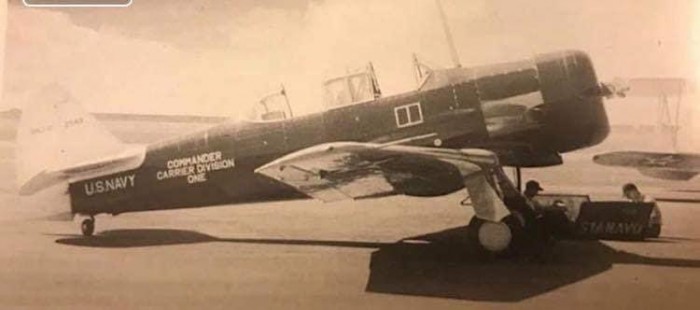
02B5AD53-9DF0-4C0B-8136-87E44B0CB9BC.jpeg [ 36.3 KiB | Viewed 57396 times ]
|
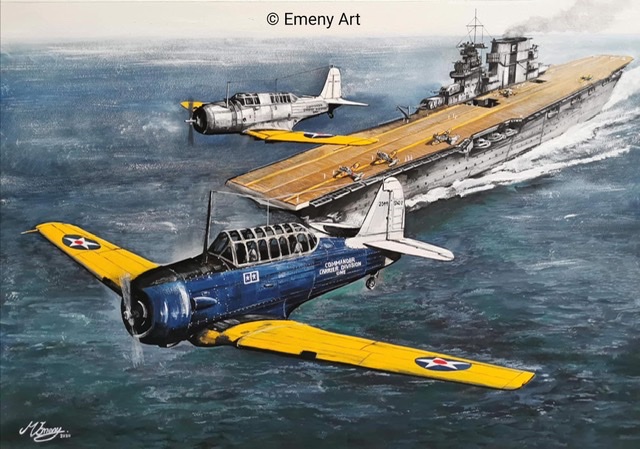
|
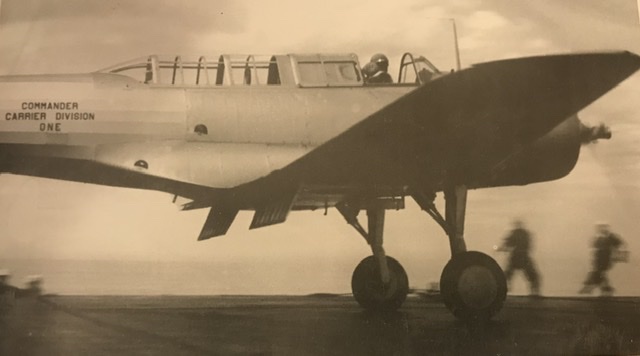
|
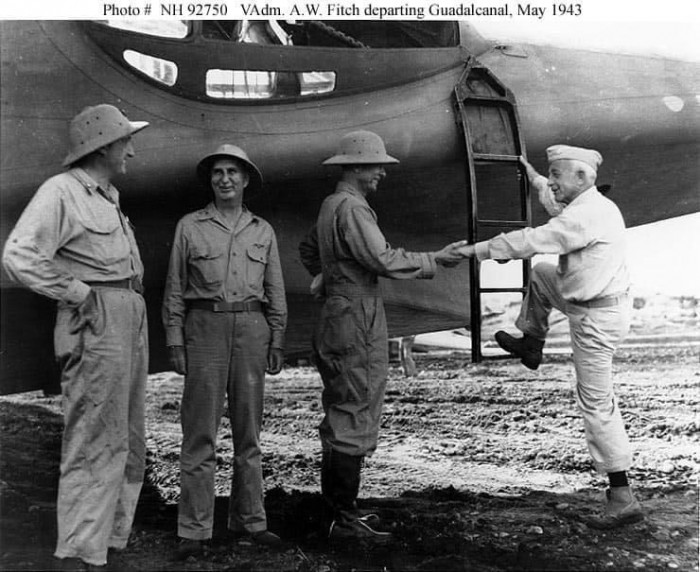
A1027422-8792-4220-A088-A5310B0D4649.jpeg [ 124.56 KiB | Viewed 57401 times ]
|
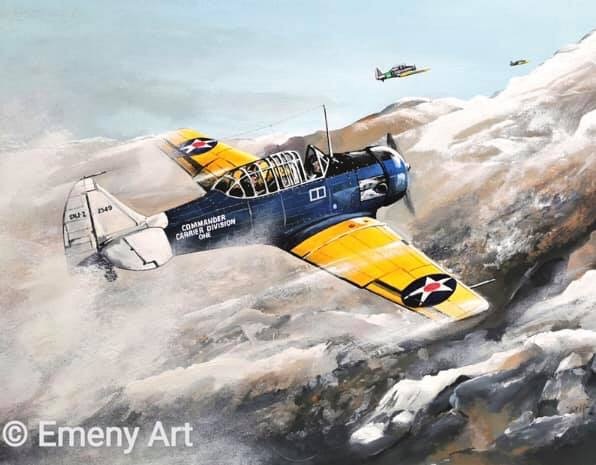
|
Last edited by VCS1 on Tue Apr 21, 2020 11:43 pm, edited 7 times in total.
|





